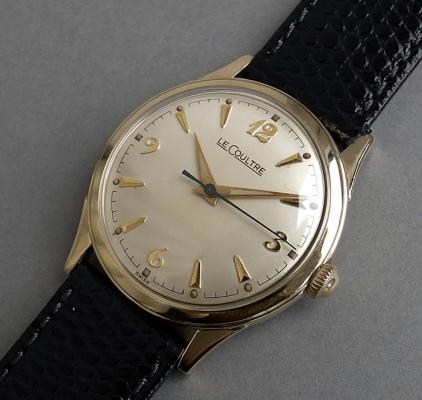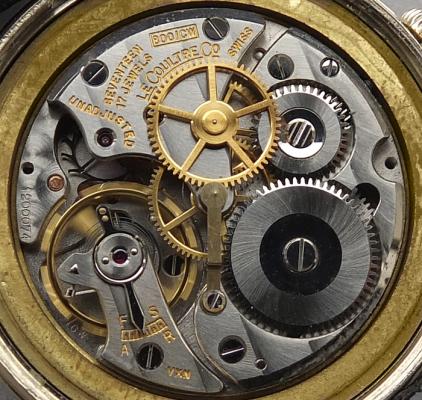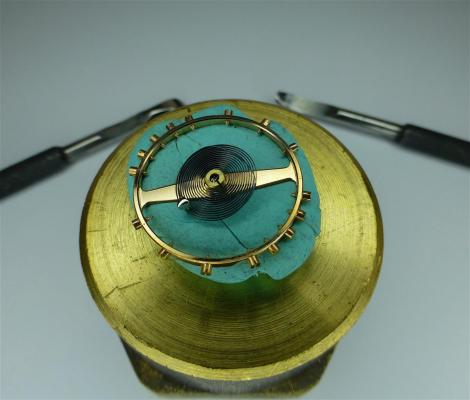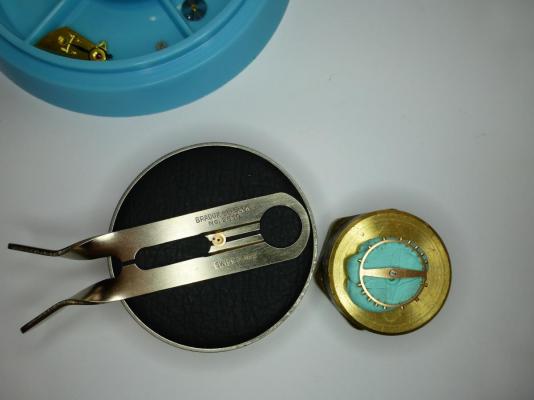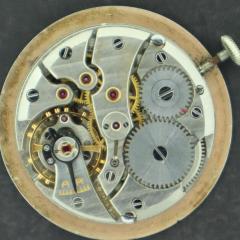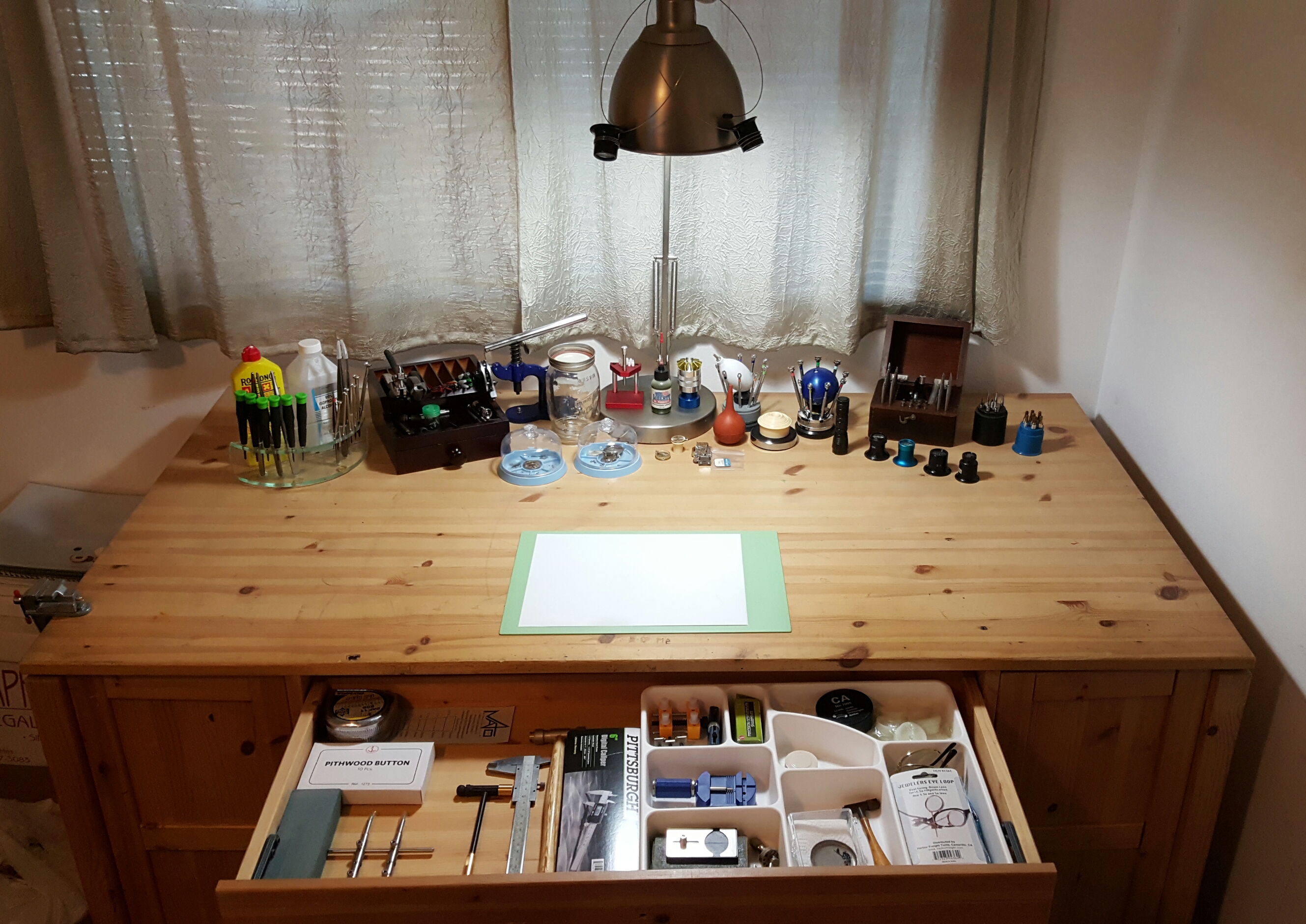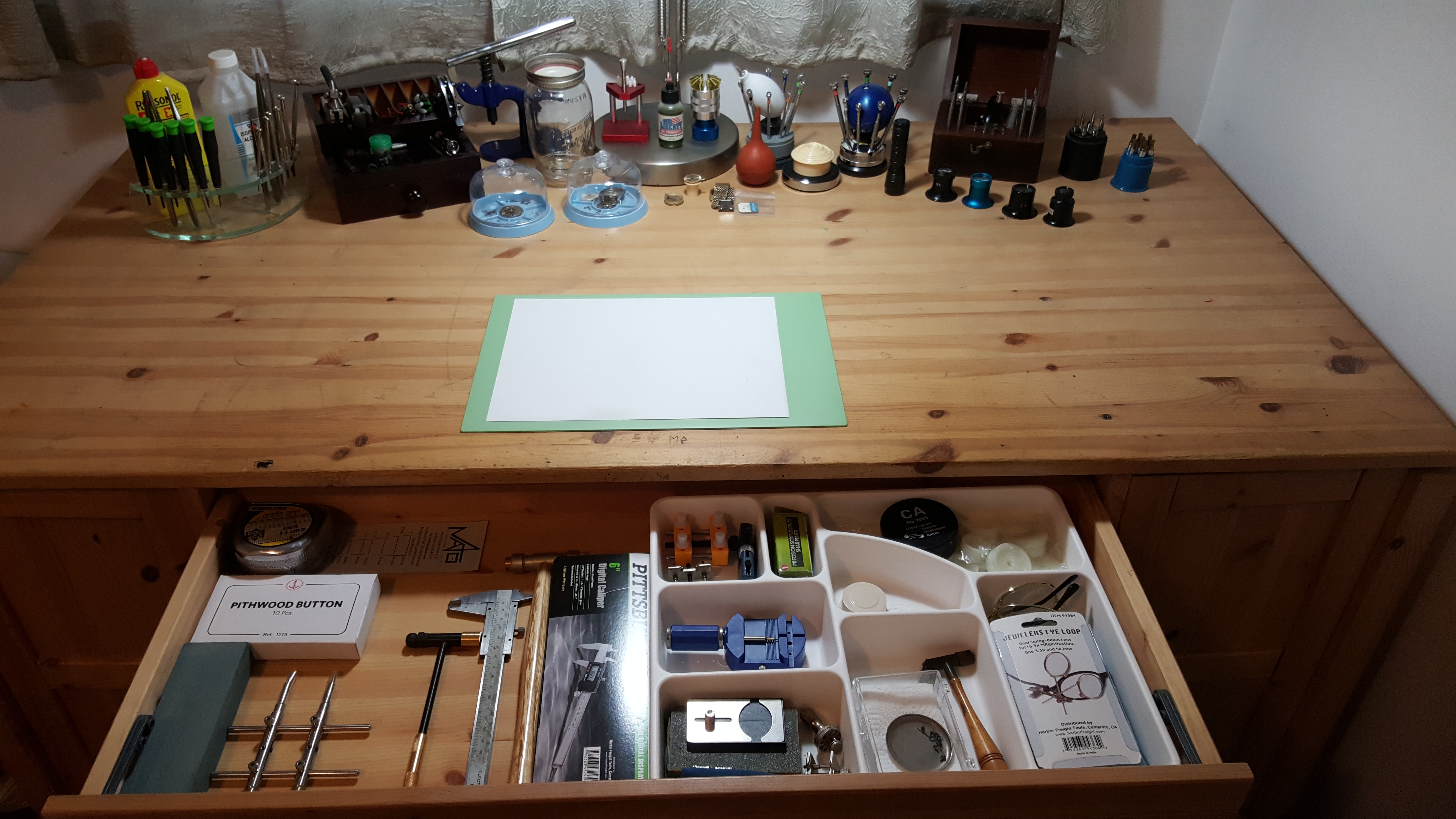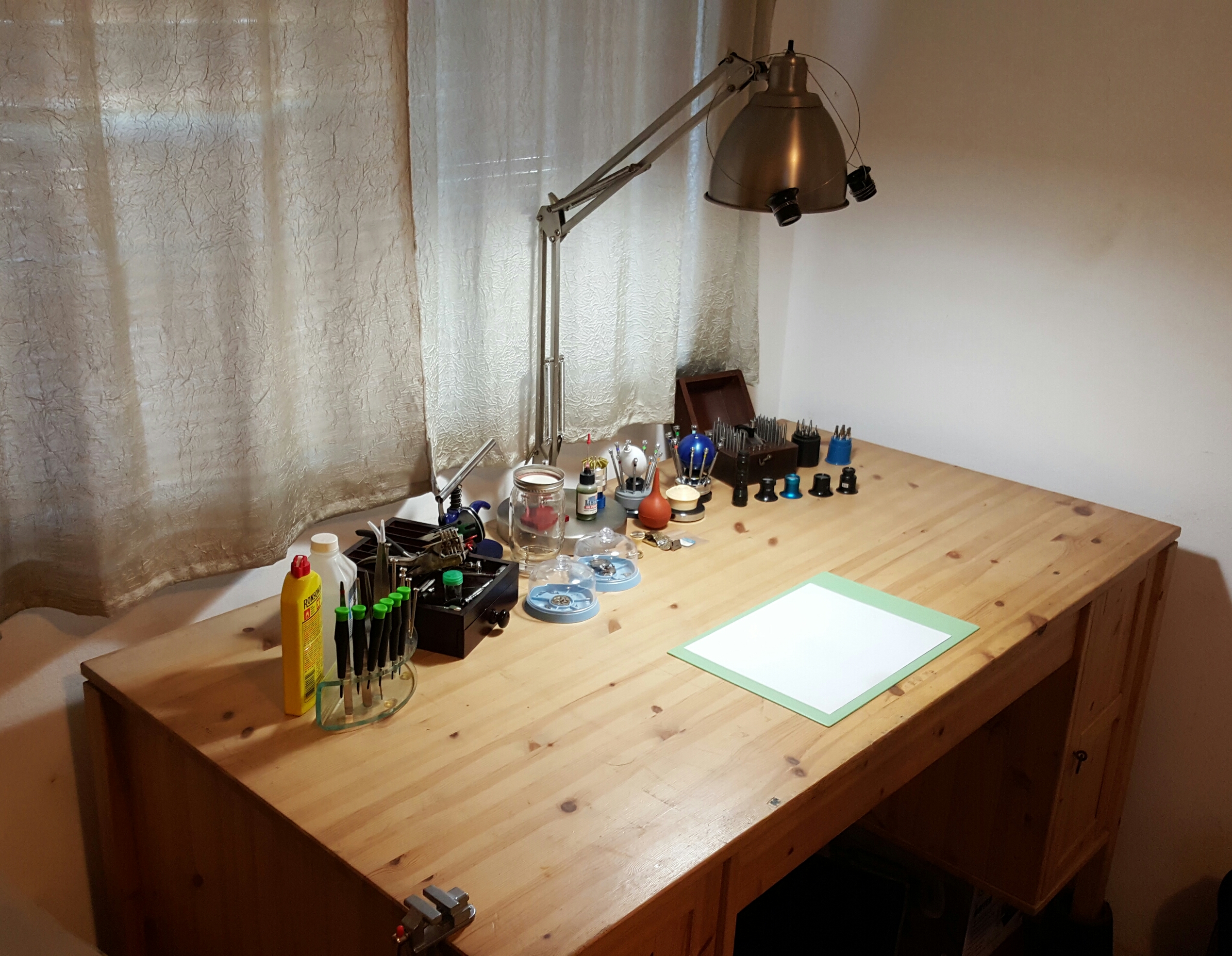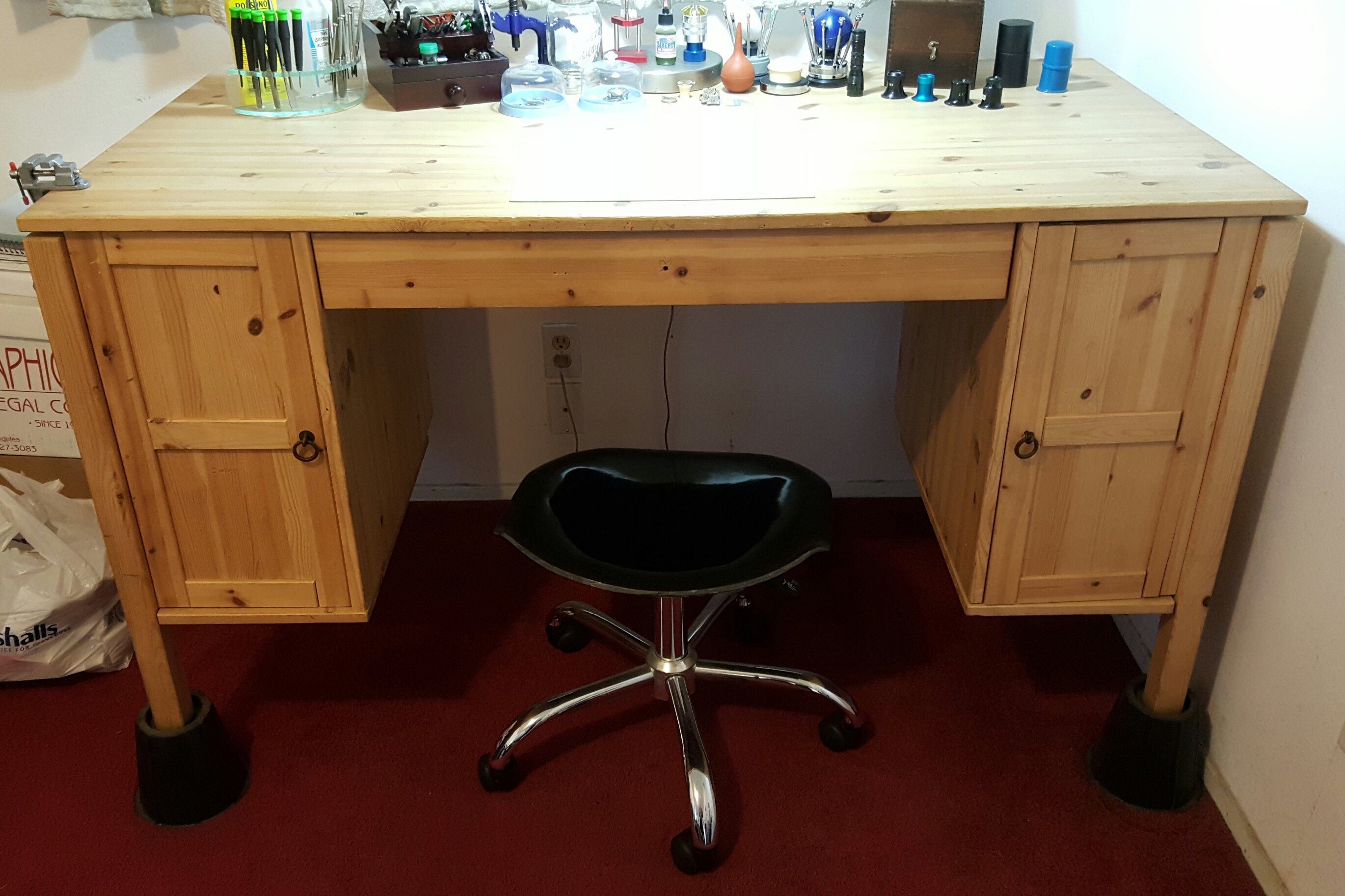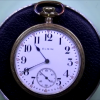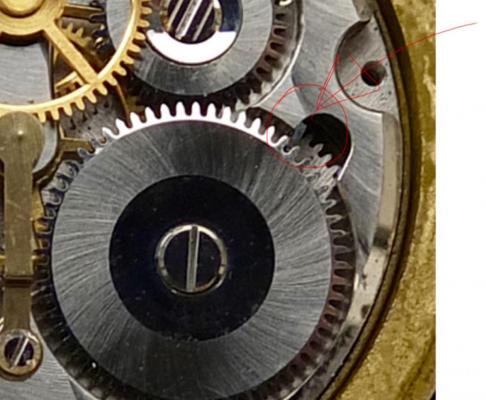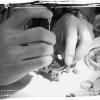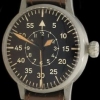Leaderboard
Popular Content
Showing content with the highest reputation on 12/02/15 in all areas
-
The image of the modern watchmaker is someone in a white lab coat working in a “clean room” environment. This does characterize most watchmaking companies and schools—except the York Time Institute. Instead of white coats we wear aprons worn by smiths because, like them, we are concerned to fire and hammer materials in order to transform them into implements and components for watches and clocks. Today, for example, I continued to learn to use my watchmaker’s lathe to make balance staffs. Part of that has involved working with various kinds of metal stock to get a feel for the kind of steels best suited for this component. Today I was working with an unusually hard bit of steel and, rather than continue to clobber my gravers, I decided to anneal the stock to make it easier to turn. This involved descending into Thor’s workshop and learn how to heat and cool the metal in an old fashioned furnace—a somewhat tedious process. This, in fact, is my second attempt. My first attempt had succeeded in softening the outer layers of the stock but I discovered, upon turning it down, a much harder core which again proved refractory to my tools. Hence the second baptism by fire. Hopefully will work. The annealing process is slow and as I started it towards the end of the day, I’ll have to wait till morning to see how successful. As for the lathing itself, it brings back memories of my dad’s and grandad’s workshops where there was always a background of smells including my grandad’s Half N’Half pipe smoke and 3 in 1 oil. Lathing is an “oil intensive” task; not the stock, but the bearings of the lathe and the countershaft need regular lubrication. This when combined with the metallic smell of metal shavings produces momentary sensations of a la temps perdu as vivid in me as the famous madeleine episode in Swann’s Way. I am momentarily transported 50 some years into the past. And this displacement, I’m convinced, is synergized by the, potent, old-fashioned atmosphere of our school. It is easier to go back in time in an environment which resembles the period to which one hearkens. I have only begun to meet with the physical materials who, someday, will acquire my substance through their changed form while I absorb theirs through their smells, textures and other physical properties. To “eat and breathe” the metals and other materials of watchmaking is to acquire a better sense of the watch itself and the delicate interplay of its parts—or so I hope. Yet, it comes with a price. The price is that much of our work appears ordinary. Dirty hands, repetitive movements, gradual changes, attention to humble details. Watches are, like us, made from matter and working with them and their materials reminds me of how St. Francis looked at his own body, which he used to call brother donkey because the body is very stubborn. So too are the watches and clocks with which we work. They seem to have their own wills and we must adapt and become more patient with them. Like a donkey, they can be both pathetic (and exasperating!) and sublime. When they become the latter it is because they have been tended by the dexterous and patient hand of the watchmaker. P.S. I have not forgotten to post my the final result of my restoration of my lathe. Next installment.4 points
-
I've been buying far fewer watches in the latter half of this year than in previous years - using money for other pursuits - having decided to move away from the selected "cheapies but goodies" on eBay in favour of more considered purchases. The last watch I bought was a Christopher Ward C1000 auto, which I've worn virtually every day since getting it - and very nice it is too - and now I've picked up this very smart Le Coultre from 1956. [seller's] photos: Some info on Le Coultre for those interested: United States duty regulations made it more cost effective to import Jaeger LeCoultre movements, dials, crowns and hands into the USA from Switzerland and for the cases to be manufactured in the States. In the 1950’s the Longines Wittnauer group was the distributor of LeCoultre watches and Vacheron & Constantin watches sold in North America. The Longines Wittnauer group did not manufacture Jaeger LeCoultre watches as some people mistakenly believe, the movements were produced in the Swiss Jaeger LeCoultre factory at Le Sentier and were identical in every way to movements distributed within Europe other than the LeCoultre markings on the watch. The cases were manufactured under licence in the United States and were marked "Cased and Timed in the USA by LeCoultre". In approximately 1985 the brand name "Jaeger LeCoultre" was adopted worldwide. Some people believe that because LeCoultre movements are signed "VXN" on the bridge (denoting Vacheron & Constantin), they were manufactured by Vacheron & Constantin. This is incorrect. Jaeger LeCoultre supplied movements to Vacheron & Constantin, which were used in their watches but not vice versa. The only collaboration that ever took place between these two prestigious watchmakers was the "Galaxy" diamond dial model. The Galaxy was marketed by both companies; with the case marked "Vacheron & Constantin - LeCoultre Inc." and the dial signed "LeCoultre". Cheers, Will2 points
-
Don't be silly Bob, there are no cheap tools from Bergeon..............even when they should be!2 points
-
I'm glad you found the stem intact and a battery replacement! Of course, this forum rocks! :)2 points
-
Don't fret, he's OK and should be back in circulation in about another week.2 points
-
Well, now that I have my new staff and the tools I need, I started the process after watching a few very good videos (thanks Mark). In my previous life, I had occasion to defuse or neutralise various "devices". During my early training we had to react to various scenarios and I remember on the first couple that my heart was going like a trip hammer and I hardly breathed in case i made a wrong move. On completion I mentioned this to my instructor (a crusty old vet who'd served with the Brits in Northern Ireland). His advice was typically Aussie. "Don't think about it son, it's just like pickin' your nose". After that I was as some say, as cool as a cucumber. Until today! Preparing to remove the hairspring and collet from the balance bought up that sense of "stuff this up and it's all over". It was then that I sat back, took a few moments and then gathered up my hand lifters and went to work. Ever so gently I manipulated the tips under the hairspring and engaged the bottom of the collet. I think I was still holding my breath as I lifted the collet and then let out a big sigh as I saw the assembly come free from the balance in one piece. After that, removing the roller table was approached with much more confidence, and that reminded me of those events so many years ago. So here are pics of the latest stages in replacing the broken balance staff of my Caliber 161. Hairspring and collet removed. See, camera isn't even shaking :-) After that, removal of the roller table was much less stressful. Now the only hurdle to overcome is removing the broken staff. But that's for another time. Cheers Jim2 points
-
This is the way it,s going to go with all ETA and other Swiss movements. Just replacing the whole movement is the only option . When you look at the vast reduction of the labour costs its a very sensible & economical repair/fix.2 points
-
Its a forever thing in watchmaking. I have over 10k euros invested in tools, and equipment so far, and I still am yet to invest in a mini lathe. Then the fun begins :)2 points
-
I love looking and watchmakers bench's and the tools that are used, it seems to say alot about a watchmaker and his work. This is my work bench at the moment. It's a regular computer desk elevated with risers to about 35 inches, just under 3 feet. As I'm just starting out I know my tools will have to gradually change to better quality than the Chinese tools that I mostly have....what's on your bench? Sent from my SM-N920T using Tapatalk1 point
-
Hello All, I came across this and thought it might be useful to some. http://www.phfactor.net/wtf/ Maz1 point
-
The answer to your question as far as the watch manufacturers are concerned is ......... Yes. Unfortunately this is the sad truth of the matter, and that is no reflection on how good you are. You will of course still be able to continue servicing watches, and as long as it is just CLA there will not be an issue. If parts are required, you will only be able to purchase them from suppliers like of Cousins until their stock runs out. After that it will be a case of trawl the net for what you can dredge up.1 point
-
Good to here from you Dan. It looks like you've been wearing that one after a good few of your special reserves! :D I'm sure some of the specialists in Bulova will help you out here. The watch has a lot of potential!1 point
-
1 point
-
Valjoux 7750 Chinese equivalent* = Cousins Reference: CH3LZF2M Valjoux 7753 Chinese equivalent* = Cousins Reference: CH3LZF1M1 point
-
Last month I've just spent about a grand on some tools from the bay. Couldn't resist when some nice tools are up for sale.Sent from my iPad using Tapatalk1 point
-
Thanks for the comments and warm welcome guys, I'll get some pics as soon as I can build it once my house doesn't look like a building site lol1 point
-
that seiko press is kick **BLEEP**, steven. your pics could use a resize as they are a bit hard to navigate.1 point
-
I have the general ressorts mainspring catalog and there is a problem with the size you have.. There are almost no mainsprings with a width of 1.65 mm in the catalog there's only 26 listed versus several pages of the 1.60 with. So in the catalog for the 1.65 a lot of the springs are American which means that ends are going to be possibly different. Then none of them are long enough the longest one in this width is 480 mm. If you go to 1.60 mm with .16 for the thickness there is a 540 mm. Which I believe is the second spring on your list. Then just because the catalog shows something doesn't mean it exists anymore..So looking at the length of 520 and width of 1.60 For each of these thicknesses they did have a spring that existed.. 17 part number 4655, .18 part number 4674 and .19 part number 4688. Then there is always the other little problem in finding mainsprings what makes you think the original is the original spring? What is the size of your watch? So for the width of 1.60 Versus 1.65 that's not going to matter much. Then if it's a blue steel spring the modern springs tend to be stronger so you can sometimes get by with a lighter spring today. Then the Length of the spring determines running time so If it's too short you are going to decrease the running time too long and that also decreases running time as there is no place to wind the spring up if the barrels full.1 point




